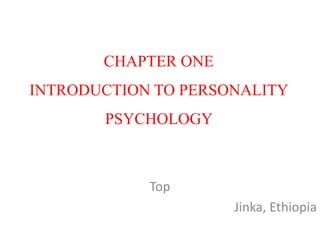The document introduces personality psychology, emphasizing the study of individual differences and how people differ from one another while also addressing commonalities among humans. It discusses the definition and elements of personality, including traits, psychological mechanisms, and environmental influences. Additionally, it outlines personality determinants such as biological, psychological, cultural, social, family, and environmental factors that shape individual behavior and identity.




























































































































